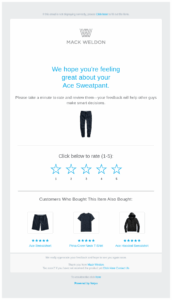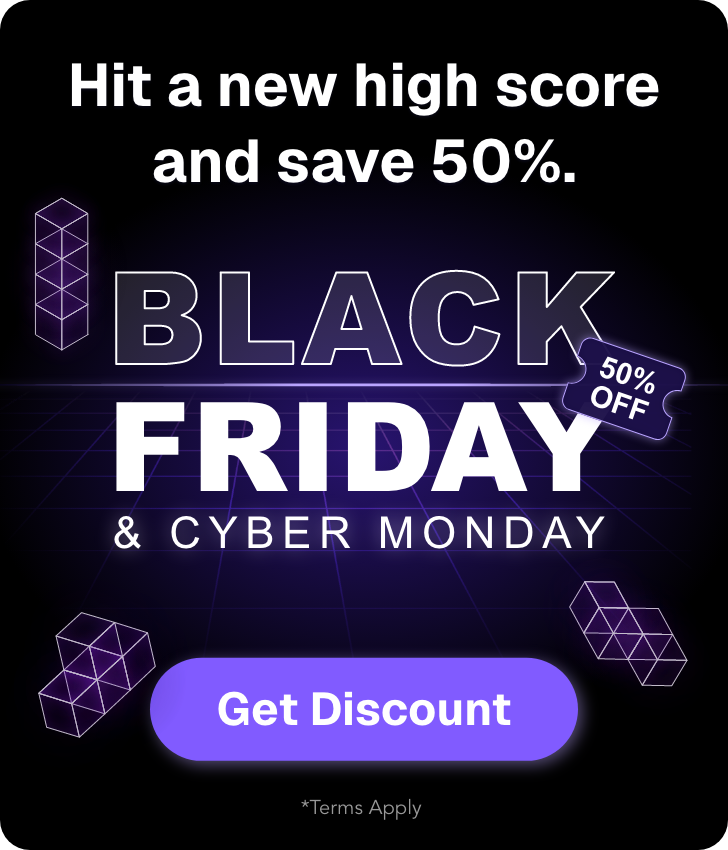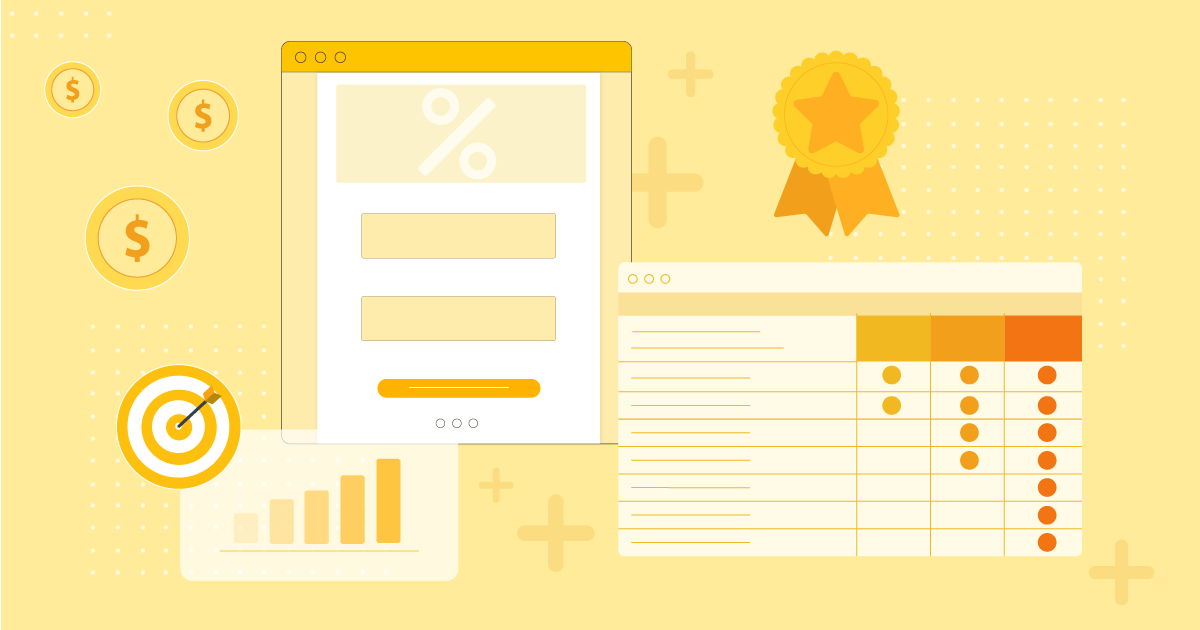
10 Post-Purchase Email Examples in 2025 [with Tips]
You’ve certainly experienced this once or twice as a consumer: a brand tries hard for the sale, and when it happens… radio silence.
But as a marketer, do you seize the post-purchase opportunity for further engagement or go completely silent after the order confirmation?
Showing up after the purchase might seem like a small gesture, yet it’s one of the most underrated tactics for keeping your brand top of mind and driving repeat purchases and long-term loyalty.
But what’s the best way to do it? A perfectly-timed post-purchase email is the ideal tool to turn a customer’s hard-earned interest into more interactions.
That’s why we collected some of the best post-purchase email examples to give you a bunch of creative ideas and explain why they work.
The beginning of a beautiful friendship
Turn every purchase into loyalty with Moosend’s email templates.
Start freeWhy Do You Need to Send Post-Purchase Emails?
As mentioned, some businesses go silent after the purchase. Take the cosmetic industry as an example: one in ten brands stops emailing customers after order confirmation. As to sending a post-purchase offer to their customers? That’s a tactic that only 25% of them use.
On the contrary, 93% of consumers consider the post-purchase experience an important part of their journey with a brand. So, if you fail to deliver, that’s potential revenue and loyalty going down the drain.
Because the minute a customer places an order is when you have their full attention. They’re already engaged and persuaded by your message. Plus, they expect post-purchase emails so they can rest assured that their order is on its way.
Keeping customers informed after the purchase helps build and nurture trusting relationships. These lifecycle emails keep the conversation going by educating customers on how to use the product or by giving them more reasons to come back.
You can use them for several purposes, all contributing to a memorable post-purchase customer experience. Plus, more sales in some cases. Here’s what you can do with post-purchase emails:
- Allow subscribers to check transaction details
- Offer real-time updates about their order
- Thank them and express your gratitude
- Tell recipients what to expect from the product/service
- Reward your audience with additional incentives
- Encourage them to enroll in your referral or loyalty program
- Boost revenue by sharing upsell or cross-sell suggestions
- Invite them to join your social media channels
- Ask for their feedback on your products/services and overall experience
- Change a negative experience (e.g., a delayed order) into a positive one, for example, by apologizing or sharing a discount on future purchases
Post-Purchase Email Examples That Inspired Us
Want to get a taste of some compelling post-purchase email examples and how notable brands use them? Here we go!
1. Apple pre-answers questions in their order confirmation email
Any online purchase comes with some distrust on the consumer’s side. Sending an order confirmation email after an order is placed is a popular tactic in B2C email marketing. Its purpose is to reassure customers that the business is holding up its end of the deal.
Brands should confirm the purchase and provide product details, preferably with images, to build anticipation. Also, the customer expects to find payment and delivery information, ideally with an order tracking link or button.
These emails are all about creating trust. To do so, Apple adds quick answers to its order confirmation email. While other brands simply include links to customer support or FAQs, they choose to pre-answer questions directly in the email to reduce friction.
Subject line: We’re processing your order W650060

Why it works:
- The clear subject line confirms that Apple is processing the order.
- There’s a product image, along with detailed shipping and payment information.
- The single-column email design is clean and free of distractions and unnecessary visuals.
- The recipient can find answers to questions within the email, as well as links to check order status in real-time or visit the Help Center.
- They use a separate section to inform recipients about the free shipping and return policy.
Tip: Sharing social proof elements like star ratings and short reviews along with the product description reaffirms your customers’ buying decision.
2. Allergy Buyers Club boosts product adoption with a follow-up
Consumers’ concerns don’t necessarily end with delivery or account creation. They might still experience stress when first using a product or service, especially if it has a slight learning curve.
The right follow-up email or sequence onboards recipients with how-to content that helps them get started.
For a SaaS business, product demo videos can effectively showcase the software’s core features. On the other hand, an eCommerce brand can choose to share short tips on how to use, care for, or store its products.
But it’s not just brands that could do the talking. Sharing case studies or customer success stories is a tactic that always adds value to your message.
Through them, shoppers see your product or service through the eyes of people already using it. The best part? These are peers with common pain points and aspirations, not marketers looking to promote.
Allergy Buyers Club doesn’t stop at thanking the recipient in this follow-up email; it also helps them get the most out of it. They walk them through the setup with simple instructions and visual representations so they’re sure they’re doing everything right.
Subject line: Thanks for your purchase Smiles Davis

Why it works:
- The step-by-step instructions are a simpler alternative to the usually confusing product manual.
- The brand offers additional options to walk subscribers through, such as links to their learning center and online guide.
- They use straightforward language, a strong CTA, and a compelling incentive to promote their referral program.
- The cross-selling opportunity feels natural, enhancing the overall product experience.
Tip: To make onboarding fun, turn it into a gamified mini challenge where subscribers unlock the next tip or adoption level by answering correctly.
3. Urth increases engagement with thank-you emails
Sometimes, all it takes for subscribers to notice your email is a simple ‘thank you’. A post-purchase thank-you email example will focus on showing appreciation for their preference.
And with the right touch, it can also help you establish your reputation as a business that values its audience.
To prompt engagement across more touch points, provide them with deeper insights into your brand and products.
For example, consider adding CTAs that direct readers to your latest blog posts or urge them to download a helpful checklist.
The key is to keep things minimal by investing in a scannable and eye-pleasing design that focuses on one or two action items. Your main objective is to keep the conversation (and engagement) going, even if it doesn’t immediately translate into a purchase.
Here’s how Urth encourages further engagement, encouraging recipients to check their online magazine and find helpful content that’ll inspire them.
Subject line: Thanks for your order

Why it works:
- Urth opts for a lightweight design with just a few lines of email copy and visuals.
- The distinct sections and corresponding CTAs help readers focus on one action at a time.
- They struck the right balance between promoting upsell recommendations, keeping subscribers informed about their order, and further engaging them on their online magazine page.
- The short motto in the email footer highlights the brand’s commitment to responsible design.
Tip: Another way to thank shoppers for their trust is to give them a sneak peek at what you’re planning next. Who doesn’t enjoy being the first to know about new releases, events, and updates?
4. Harney and Sons Fine Teas offers a small perk
Saying thank you is the first step. To go above and beyond, throw in a little treat that your customers will love.
These perks don’t cost much for a business, but they mean a lot to your audience. That’s because they make them feel like they belong to a special club.
For instance, it could be a personalized freebie that matches their buying habits or a discount they can claim on their next purchase. Another idea is to offer early access to new products or features.
A clever trick is to highlight the perk in your subject line to boost opens, just like Harney and Sons Fine Teas does in the following post-purchase email example. Also, they place the tailored perk at the top of the email so it’s the first thing the recipient sees.
Subject line: Smiles Davis, Thank You for Your Purchase! Save $10 on Your Next Order.

Why it works:
- The brand sets clear expectations from the subject line, highlighting the thank-you note and the $10 discount reward.
- The content stays product-focused, using playful “tea” puns and featuring an image of colorful sachets that evokes warmth.
- The cross-sell product recommendations are naturally integrated without creating visual noise.
- The CTA directs subscribers to a tea-brewing guide so they can easily learn to make seven different tea types.
Tip: Ensure the process for claiming the offer is simple and straightforward. If the subscriber has to go through extra steps to get it, chances are it will bring the opposite results.
5. Sundays for Dogs encourages a post-purchase review
Besides boosting your revenue, post-purchase emails can also drive customer reviews, helping you improve your offerings and providing valuable social proof.
Once they share their feedback, all you have to do is select the best reviews and feature them across touchpoints like your website, emails, social media, or paid ads.
Positive reviews shape trust and credibility. That’s why they often serve as the deciding factor in consumers’ decisions.
What’s the best way to request reviews? It all starts with timing.
Sending such an email the next day after the product delivery is a bad idea since your customer may not have had sufficient time to assess its value. So, 4 to 5 days or even a week later is a good time to deliver it.
Next, you should ensure your objective is crystal clear from the subject line and a descriptive CTA. Also, it’s better to mention the completion time, as this affects whether recipients take the next step.
This is precisely what Sundays for Dogs did in the email example below, using the subject line to ask for two minutes of the subscriber’s time to complete a review.
Subject line: Got two minutes?

Why it works:
- The brand uses a subject line in question form to let subscribers know how much time the review will take.
- The email copy focuses on the result, emphasizing how the recipient’s feedback will help the brand do better.
- The generous referral incentive is prominently displayed to capture attention.
- The fun fact at the end of the email adds a touch of personality, making the message more memorable.
Tip: But what really urges subscribers to submit a review is to give something back. You can sweeten the deal by offering a small incentive, such as a discount, a freebie, or access to an upcoming webinar. This gesture shows that you appreciate their time and effort.
6. Chewy sends perfectly-timed replenishment emails
Similar to review request emails, timing is of the essence in replenishment emails. This email campaign type serves as a gentle nudge for recipients to reorder just when their stock could be running low.
The benefits of replenishment emails go both ways. Consumers are constantly tackling different tasks. Amidst this challenge, they might forget to replenish essentials like snacks, health supplements, printer ink, and baby or pet care products.
This is where your replenishment emails come in handy, reminding subscribers to reorder. They get that “I knew I had forgotten something” reaction, hitting the CTA with a sense of gratitude and one less thing to remember.
Chewy, for example, sends its replenishment email right around the time the subscriber will need a restock.
Subject line: Running Low?

Why it works:
- The subject line reveals just enough for the subscriber to take a hint while sparking their curiosity.
- The free shipping on orders above $49 is the first thing the recipient sees, giving them one more reason to act.
- The personalized top picks are displayed in a structured list, accompanied by the product’s image and a CTA to buy.
- The email footer includes additional persuasive elements, like 24/7 customer service and hassle-free returns.
Tip: For these emails to be effective, send them right before your customer runs out of stash. Autoresponder software helps you achieve this by automatically analyzing your subscribers’ purchase patterns and your product’s or service’s lifecycle, allowing you to determine when they’ll need to restock.
Want to boost repeat purchases while removing manual setup? You can use Moosend’s repeat purchase reminder automation recipe to trigger your automation on a specific date (before your subscriber runs out of your product).

7. MeUndies boosts referrals in its shipping confirmation email
Do you have loyal customers who keep coming back, or happy customers who have left glowing reviews? Next time you send a post-purchase email, consider promoting your referral program.
A compelling referral advertises itself. For example, if you offer a generous 20% discount for each referral, you’re halfway there. Once you’ve persuaded them, you’ll have multiple opportunities to increase revenue.
That´s because with every referral, you acquire a new customer with fewer resources than usual. On top of that, you have an existing customer who´s ready to buy again so that they can claim their reward.
In this shipping confirmation email, MeUndies places the corresponding section right below the order tracking CTA to guide their attention towards it.
Subject line: Your Order Has Shipped 📪

Why it works:
- The clever copy in the header is formatted as a haiku, immediately grabbing attention, especially compared to something common like “Your order is on its way.”
- It includes all shipping details, accompanied by a prominent email CTA to track the order.
- There’s only one image strategically placed in the section promoting the referral program, allowing subscribers to visualize the products.
- The email footer has it all: trust signals, a “follow us” invitation for social media, and a link to the Help Center.
Tip: Successful referral messages need clear instructions and a list of the reasons to join. But apart from that, you’ll need a bold and focused CTA that clearly communicates its purpose: directing recipients to your referral signup page.
8. Mack Weldon uses upselling and cross-selling strategically
A customer who’s already familiar with your brand is more likely to trust you again, especially if the product or service met their expectations.
Upselling and cross-selling recommendations in post-purchase emails allow you to increase a customer’s lifecycle value and drive repeat sales. It could be through a matching accessory in a fashion email or a room upgrade in travel email marketing.
The key is not to get too pushy too soon. Subtle and timely is the way to go. Customers have just bought a product, so they might not be ready to spend more. This is why you should emphasize how your suggestions will help them.
Mack Weldon uses this approach in their review request email, subtly recommending matching products that other consumers loved.
Subject line: So, what’d you think?

Why it works:
- The campaign kills two birds with one stone, asking for a review while recommending matching products in the same campaign.
- They ensure quick completion (“take a minute”) by allowing the recipient to click the corresponding star rating.
- The reader can understand why the brand recommends these products, given their popularity among consumers who have purchased the same sweatpants.
- The helpful calls-to-action (“Click here” and “Contact us”) in the email footer are a thoughtful addition in case the customer hasn’t received the product yet.
Tip: To make this post-purchase email strategy more effective, add trust signals like Mack Weldon did. Besides social proof, you can drive action by using solution-focused wording, for example, “upgrade to X version to get Z result” in an upselling email.
9. Krispy Kreme invites subscribers to join its loyalty program
Another effective method to increase a customer’s lifetime value is to have them join your customer loyalty program. Such a campaign focuses more on what the subscriber has to gain rather than promoting additional offerings.
Just when the subscriber is excited with their new product, it’s time to let them know that with more purchases, they’ll get more rewards. This translates into discounts, early access, or exclusive experiences.
But loyalty and rewards programs offer additional value to brands. When a customer joins such a program, they continue to interact with your business.
With every purchase, you get more insight into their likes, needs, and patterns. Which, in turn, helps you connect with your audience on a deeper level and provide them with more relevant solutions.
Krispy Kreme does an excellent job in the following email, making it all about the benefits of downloading the app and joining their privileged community.
Subject line: Krispy Kreme Rewards

Why it works:
- It draws the reader’s attention where the brand wants it through bold red (easiest) and capitalization (FREE).
- The brightly colored, unique CTA is placed at the top, just below the headline, to drive quick action.
- The benefits listed are several and compelling, ranging from free treats to exclusive offers and skip-the-line orders.
Tip: To ensure conversions, include a list of all the benefits that loyalty members enjoy. Keep the main points brief, comprehensive, and precise so they can understand how tiers work and the terms and conditions involved.
10. Haoma ties the purchase to a good cause
Consumers today often encounter brands that engage in unsustainable practices, poor working conditions, or unethical marketing. That’s why brand values matter more than ever, and businesses that set a good example outperform their competitors.
Numbers show that 63% of US consumers expect brands to share the causes they support. Now imagine backing it up with specific outcomes that result from your subscriber’s purchase.
So, instead of sending a plain order confirmation email, highlight how the customer’s recent order helped you support a cause that motivates them.
Haoma uses this tactic in the post-purchase email example below, informing the customer that they’ll plant a tree in return for their order.
Subject line: Thank you for your order

Why it works:
- The order details are the first thing the recipient sees in this post-purchase email example, while the tracking option offers extra peace of mind.
- It adopts a customer-centric approach, emphasizing their contribution (“You just planted a tree”) rather than highlighting the brand’s commitment to a cause.
- The additional resources educate subscribers on the cause, highlighting the positive results they can achieve together.
- The brand invites readers to follow them on Instagram with a clear, actionable email CTA.
Tip: If you have numbers that back up your claims, add them to your email copy to communicate your purpose tangibly. For instance, mention the percentage of sales that you donate to social or environmental initiatives.
How to Create Post-Purchase Emails that Stand Out
There are multiple use cases for post-purchase emails. But unique goals aside, you need to ensure each post-purchase email you send sets the foundation for lasting relationships.
Here’s how:
- Include every relevant detail in your order and shipping confirmation emails, such as the products purchased, contact information, payment details, and delivery details.
- Use CRM email marketing software to manage customer data (such as browsing history, buying behavior, and demographics) and create detailed segments, e.g., first-time vs. repeat shoppers.
- Tailor email content to deliver targeted recommendations and incentives based on each recipient’s behavior, tastes, and stage in the sales funnel.
- Write in a natural, engaging, and human tone, avoiding generic phrases and complicated messages. Short copy that instantly addresses concerns and highlights key benefits works great in post-purchase emails.
- Add a tracking call-to-action to keep subscribers updated on their order in real time, easing potential anxiety about delivery.
- Offer multiple contact options so subscribers know you’ll be there to resolve issues if they occur. Also, provide self-service resources like FAQs for quick guidance.
- Be mindful of your subscribers’ time by researching and testing to find optimal sending time and frequency. Also, space out your campaigns, especially for first-time buyers who aren’t yet committed to your brand.
It Takes a Single Purchase to Drive Repeat Sales
The emails you send after a customer completes an order can be so much more than just another touchpoint. They’re a unique opportunity to strike while attention’s hot and your product’s value is still fresh in your customer’s mind.
So, use your post-purchase emails to open the conversation rather than close the circle.
Nurture subscribers with tailored content and promotions, tell them that their input matters, and encourage them to interact with your brand again and again.
Want to add a reliable revenue stream to your marketing strategy? Join Moosend for free to start building outstanding post-purchase emails and automate your way to customer loyalty.
FAQs
Here are some common questions regarding post-purchase emails.
1. What is a post-purchase email?
A post-purchase email is the message sent by brands when a customer makes a purchase. They usually include transaction and shipping details, as well as educational content, so subscribers can familiarize themselves with the product.
You can also use these campaigns to upsell or cross-sell, request reviews, or invite readers to a referral program.
2. What are the benefits of post-purchase emails?
The most important benefit of these emails is that customers expect them, so you have their full attention. By delivering helpful content, post-purchase emails also help you build trust and credibility. Plus, a post-purchase campaign can lay the groundwork for repeat purchases or provide you with social proof.
3. When is the best time to send a post-purchase mail?
There are different types of post-purchase emails, and the optimal sending time may vary depending on their goal.
For example, a thank-you email or an order confirmation should arrive within a few minutes of the subscriber placing the order. Whereas a review request email sent immediately after the purchase doesn’t make sense, since your customer won’t have even received the products.



 Published by
Published by

 Published by
Published by
